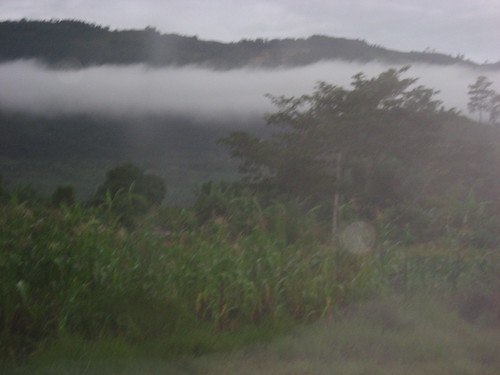It's easy to think about snow as destructive, a harbinger of the cold season to come, a hassle complete with slush and ice. But I try to see the snow as a different sort of phenomenon.
This past summer we got to see a Hopi corn field in the Four Corners region of Arizona. The place being something of a secret, not normally seen by visitors' eyes, complicated arrangements were made to take us to an out of the way spot accessible only by gravel road. The sun was out and it was very hot. The sere ground in every direction looked empty and without vegetation. This wasn't the corn country I knew from the midwest.

When we got to the field it was nothing like I had ever seen, a truly amazing moment. Bundles of young corn plants were growing together in points four paces from the next bundle. The crop, we were told, was planted this way to avoid competition for scarce water. Out of eight seeds planted about two plants were expected to make it to maturity.
There are many spiritual aspects of corn planting and harvesting that I won't discuss right now. Suffice it to say the the photo I'm showing here was not from that field, but from a visitor center some miles away, where it was just barely permissible to take pictures. That gives you some idea how close the spiritual relationship is between the people and their crop.
The subject here is snow and the garden. And the Hopi corn field is more a garden than an acre of farmland. The most amazing thing I learned there is that in the spring, the farmer digs way down in the soil, between eight and 12 inches, to find the moisture from last winter's snowmelt. The seeds are dropped all the way down and covered with sandy soil, which means they have to supply enough energy to the emerging plant to make it all the way to the surface before photosynthesis starts.
I've taught about the physiology of seed germination for years and before this I never imagined planting any seed so deep down. The Hopi corn seeds have been bred by generations of farmers to do the unbelievable job of growing to the surface from an incredible depth.
All this says something about snow and our relationship to it. Here in the East where we have plenty of rain all season, snow is a nuisance. Ecologically it plays a role of insulating the soil and the slowly emerging plants at the surface, but in terms of the moisture it provides snow is not that significant. From the perspective of a farmer in the Four Corners who is planting without irrigation, the winter snow holds the key to next year's crop.
Corn came to the Four Corners from as far as Central America. Down in the highlands of Chiapas in southern Mexico, I saw it growing straight up the hillside to the rainforest. Moisture in Chiapas is abundant and available year-round.

As corn migrated north humans learned new ways to grow it successfully. They did more than subsist, whole civilizations thrived with a diet of corn as their basis. Humans have grown corn with and without irrigation for thousands of years. One of the gifts of indigenous Americans to the world is that they are geniuses at farming. For generations they have observed their landscape, recognized it as a sacred gift, and used it with respect. As we face catastrophic climate change in our time we should think long and hard about how to grow and nurture crops in accordance with the environment.
No comments:
Post a Comment